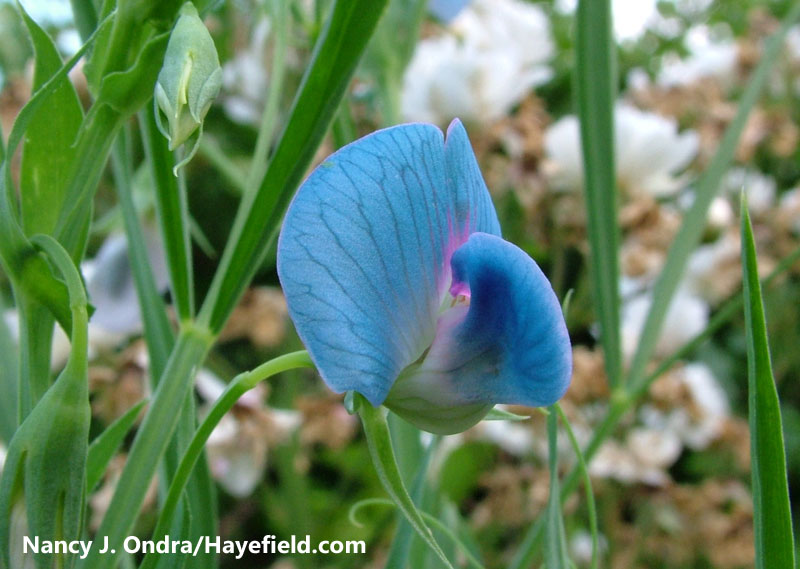Grasspea
Lathyrus sativus
Grasspea (Lathyrus sativus) is a hardy crop, able to withstand extreme environmental conditions such as drought, floods and poor soils. For this reason, it is sometimes considered a famine food, eaten when other crops have failed. It is grown in pockets in South Asia, southern Europe and the Horn of Africa.
Grasspea is sometimes cultivated and consumed during famine periods thanks to its ease of cultivation and ability to grow under harsh conditions. However, seeds contain a neurotoxin that can lead to paralysis in adults and brain damage in children when consumed as a major part of an unbalanced diets over long periods. Seeds can be detoxified by various processing methods, and low-neurotoxin varieties developed by exploiting the genetic diversity of the crop. Researchers at ICARDA have developed low-toxin and toxin-free grasspea varieties. This has been possible thanks to the wide genetic diversity available at the Lathyrus genebank collection.
Grasspea is primarily self-pollinating although there may be up to 30% cross-pollination. In view of this, precautions must be taken to maintain the genetic integrity of grasspea varieties during regeneration.
Collecting
Collecting Projects
The history of grasspea domestication is still unclear. Archeological remains have been found in the Balkan region dating to around 8000 BC, in Iraq around 6000 BC, and in India between 2000-1500 BC. Domestication may had taken place alongside other pulses, like pea (Pisum sativum), lentil (Lens culinaris) and bitter vetch (Vicia ervilia). Two small secondary centers of diversity are found in North and South America.
Use
Grasspea is used as food, feed and green manure. It is intercropped with other food crops to reduce pest outbreaks, and sown in rice fallows.
Pre-breeding Project
Collections
Major grasspea collections
The main international Lathyrus germplasm collection worldwide is maintained at the International Center for Agricultural Research in the Dry Areas (ICARDA), with over 4,000 accessions, followed by the Conservatoire Botanique National des Pyrénées et de Midi-Pyrénées (about 4,000 accessions) and the National Bureau of Plant Genetic Resources, India (about 2,600 accessions).
The grasspea global conservation strategy highlights the urgency of upgrading documentation systems, safety duplication and adopting international standards for managing existing collections, as a means towards a rational and effective conservation system.
COLLECTING PARTNERS
- Armenian Botanical Society (ABS)
- Genetic Resources Institute (GRI) of Azerbaijan National Academy of Sciences
- Agricultural Research Institute (ARI) of the Ministry of Agriculture, Natural Resources of Environment
- Institute of Botany of Ilia State University (IoB)
- National Botanical Garden of Georgia (NBGG)
- Museu Nacional de História Natural e da Ciéncia
- Lebanon Agricultural Research Institute (LARI)
- National Agriculture Genetic Resources Center (NAGRC - Nepal)
- University of Pavia
- Spanish Institute for Agricultural and Food Research and Technology (INIA, Spain)

